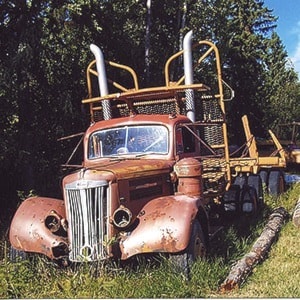When I first came to Quesnel in 1970, logging and forestry were still in their fledgling stages, even if we all thought differently at the time.
A logging show then consisted of a road building cat, two or three hand falls, a couple of rubber-tired skidders and a small track skidding machine, a marker and bucker man coupled with a loader and two or three logging trucks.
This group of 12 to 15 very hard-working people would produce from six to 10 small truck loads of logs each day. You might remember the trucks of that era as pole-axle trailers, a five-axle truck/trailer combination capable of hauling 50 – 60-foot logs. There were also some six-axle short-log truck trailer combinations to handle short logs required for plywood plants at the time.
Flash forward to 2012. Equipment manufacturers have now developed powerful falling machines coupled with large and versatile skidding equipment capable of moving large bundles of timber to the main road. From there, a processor de-limbs and cuts the tree into short lengths, sorting the logs into piles based on where they will be delivered. The final stage is loading the logs onto trucks using a large butt-n-top loader.
This new era logging sees roughly half of the manpower producing two to three times the amont of wood. Logging contractors today have a huge investment in specialized equipment, requiring trained operators working as a team to get the logs to the mill. One of the biggest positives in modern logging is the safety factor in getting people off the ground and into the protected cab of a machine.
The log trucks we see on our highway today are usually seven to eight-axle short log trucks carrying three or four segments of shorter wood to either a sawmill or plywood plant. The trucks are now capable of hauling nearly double the payload of the 1970s era haulers, which has helped minimize large truck traffic on our highways and logging roads.
So has the industry made progress over 40 years? Of course it has, in both the methods used and the footprint left on the ground. Will it develop further in the years ahead? You bet it will, as we recover from the beetle impact and move into younger second growth forests. Just watch!
Gordon Russell is a graduate forester who has lived and worked in Quesnel for 40 years. He retired from Weldwood (West Fraser) in 2009.
